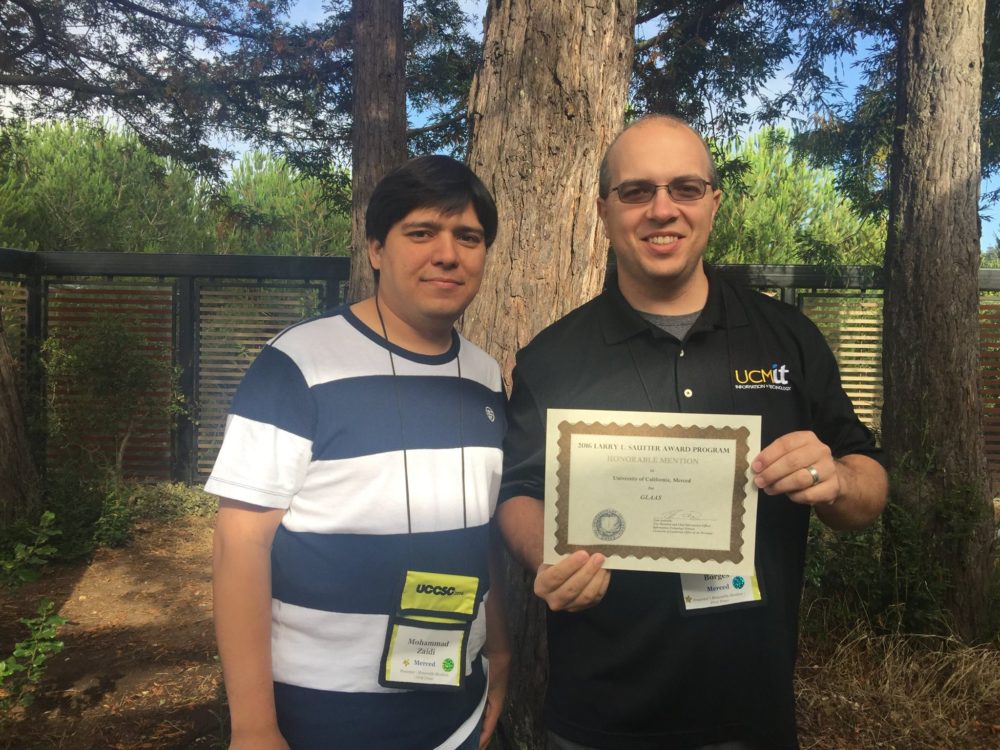Posted by Desiree Silva, IT Communications Officer, UCM. Sometimes it’s difficult for information technology experts and higher education faculty to get on the same page. However, a recent project completed at UC Merced has shown how it’s done.
The Graduate Lecturer Academic Appointment System (GLAAS) project recently instituted at UC Merced has drawn rave reviews from those involved on the campus, as well as a panel at a the University of California Computing Services Conference held July 12 in Santa Cruz. GLAAS was given honorable mention by the Larry L. Sautter awards committee, just the second time a UC Merced project has been selected.
The project, which culminated in an online tool that helps various schools and academic payroll offices manage hiring, was spearheaded by the UCM Office of Information Technology at UC Merced. The GLAAS team included technical staff Roger Borges, Raj Paneer and Mohammad Zaidi, and manager Jose Magana.
According to Borges, the project required very close collaboration between faculty and the OIT department. “Staff understood that this was a good thing for them; they were very cooperative and contributed,” Borges said. “If it wasn’t for them we wouldn’t have been able to do as good of a job.”
GLAAS promotes standard business processes and workflows and standardized document templates used by different schools across multiple academic teams. “The success of the project has helped the relationship between OIT and staff,” Zaidi said. “It bonds us closer with the academic side of the house. They wish projects worked more like GLAAS. They have a more positive feeling about us.”
The GLAAS project was on the university’s “to-do” list and was approved at the end of 2014. The Director of Academic Personnel Office (APO) came to OIT to ask for a way to automate the manual practice for hiring for academic positions. Work went into exploring different practices; the GLAAS team learned there was not a standard hiring process across the school. The GLAAS team brought together different departments in an effort to learn the commonality of their work. The team helped develop a standardized process, which allowed them to develop a web application.
The web application is maintained by the Academic Personnel Office, and automates and electronically tracks appointments. It also automates and promotes paperless communication. The establishment of GLAAS improved the automation process and standardized business process flows, resulting in a much more efficient system.
GLAAS has helped UC Merced move toward its goal of being a green campus. For example, the APO had a manual hiring process — research of each of the appointments was paper-based and then archived. GLAAS now allows for digital archiving, making the process almost completely paperless. With more than 800 appointments per year, the process was time-consuming, the GLAAS system has significantly reduced the amount of time spent on the hiring process.







